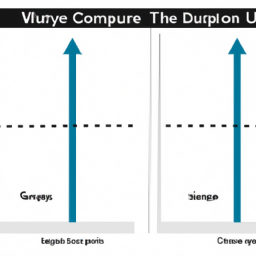We all know that investing is one of the best ways to build wealth over time, but with the broad range of options available, it can be difficult to find the right approach for your financial goals. One of the most popular strategies for long-term investors is to use a dividend reinvestment plan, or DRIP. A DRIP allows investors to automatically reinvest their dividends and make regular investments without having to buy or sell individual stocks. It’s a great way to benefit from the power of compounding and to build a portfolio that can withstand the ups and downs of the market.
In this article, we’ll discuss what a DRIP is, the benefit of using one, and how to make the most of it. We’ll also discuss some of the potential drawbacks of using a DRIP and some alternatives that you may want to consider. By the end of this article, you should have a better understanding of how to use a DRIP to reach your long-term investment goals.
What Is A Dividend Reinvestment Plan (DRIP)?
A DRIP is an investment plan in which dividends are automatically reinvested into a portfolio of securities. This means that instead of receiving the dividends as cash, they are reinvested in the same stock or mutual fund. This allows investors to build up their portfolios without having to purchase additional shares.
The most common form of DRIP is a non-registered dividend reinvestment plan, or DRIP. This type of plan allows investors to purchase additional shares of a company’s stock or mutual fund with the dividends they receive. The cost of each share is typically lower than the current market price, and the investor is given the option to reinvest all or part of their dividends.
benefit Of Using A DRIP
One of the main benefit of using a DRIP is the power of compounding. By reinvesting the dividends you receive, you can increase your portfolio’s growth potential significantly over time. This is because your dividend payments will add to your original investment, creating a snowball effect that can accelerate your wealth-building.
Another benefit of using a DRIP is that it can help investors diversify their portfolios. By investing in a variety of stocks and mutual funds, you can spread out your risk and protect yourself from market volatility. This is especially beneficial for long-term investors who want to lower their risk of losses.
Additionally, DRIPs give investors the flexibility to invest varying amounts of their dividends back into the company’s stock. This allows them to adjust their investments according to their goals and needs. For example, if an investor wants to build up their portfolio more quickly, they can increase their DRIP contributions. On the other hand, if they want to take a more conservative approach, they can decrease their contributions.
Drawbacks Of Using A DRIP
Although there are many benefit to using a DRIP, there are also some potential drawbacks that investors should be aware of. One of the main drawbacks is the lack of liquidity. Since your dividends are being reinvested, you won’t have access to the cash until you sell your shares. This can be problematic if you need cash for an emergency or other unexpected expense.
Another potential drawback is that there may be fees associated with the DRIP. Depending on the company, there may be setup fees, administrative fees, or other charges that can eat into your returns. Be sure to research the specific fees associated with the DRIP before you invest.
Alternatives To A DRIP
If you’d like to take advantage of the power of compounding but don’t want to use a DRIP, there are some alternatives you may want to consider. One option is to set up an automatic monthly investment plan in which a certain amount is automatically transferred from your bank account into a brokerage or mutual fund account. This allows you to take advantage of compounding without having to manually reinvest your dividends.
Another option is to invest in an index fund. An index fund is a type of mutual fund that tracks a specific stock or bond index. By investing in an index fund, you’ll be able to diversify your portfolio and benefit from the compounding effect of reinvested dividends.
